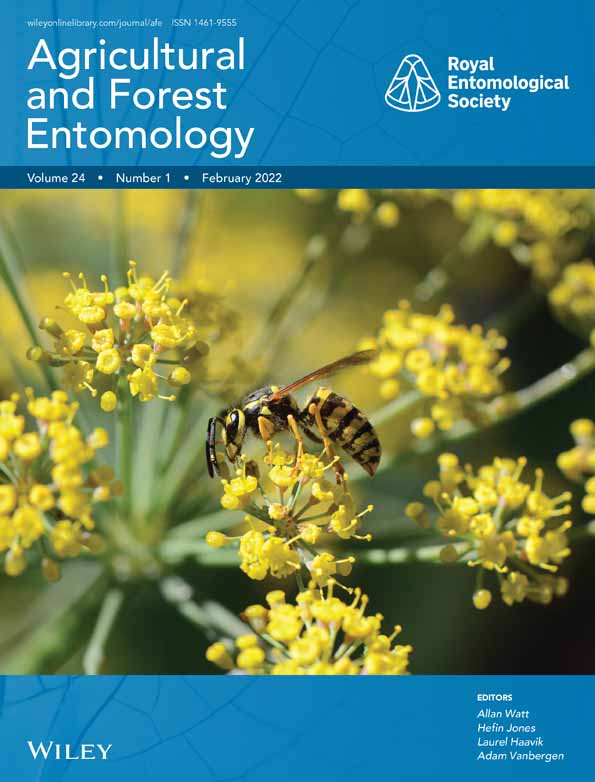Ver ítem
- xmlui.general.dspace_homeCentros Regionales y EEAsCentro Regional Patagonia NorteEEA BarilocheArtículos científicosxmlui.ArtifactBrowser.ItemViewer.trail
- Inicio
- Centros Regionales y EEAs
- Centro Regional Patagonia Norte
- EEA Bariloche
- Artículos científicos
- Ver ítem
Host genetics determines food preferences of the moth Perzelia arda (Lepidoptera: Depressariidae)
Resumen
Genetic variation among host plants can influence herbivore behaviour and consequently their abundance, performance and environmental impact. In the Andean- Patagonian forest, the arboreal vegetation is dominated by species of genus Nothofagus. Previous studies of Nothofagus alpina demonstrated differences in genetic diversity among and within its populations. The native caterpillar Perzelia arda feeds on various Nothofagus sp.
2. Our aim was to evaluate
[ver mas...]
Genetic variation among host plants can influence herbivore behaviour and consequently their abundance, performance and environmental impact. In the Andean- Patagonian forest, the arboreal vegetation is dominated by species of genus Nothofagus. Previous studies of Nothofagus alpina demonstrated differences in genetic diversity among and within its populations. The native caterpillar Perzelia arda feeds on various Nothofagus sp.
2. Our aim was to evaluate host selection behaviour of P. arda larvae towards different genetic pools of N. alpina trees.
3. We collected leaf samples from trees growing in a common garden field trial and evaluated, by paired comparisons, not only differences among provenances but also variation between and within open pollinated families.
4. Our results demonstrated that P. arda performed a choice between the leaves of the host plants offered. This larva was able to choose specific provenances, open pollinated families and genotypes of N. alpina.
5. In conclusion, the larva is guided by characteristics of individuals and host plant species. These innovative results in insect–plant interaction studies demonstrate that it is important to evaluate discrimination between intra-specific hosts. Further study is required to fully understand the use of resources by this native insect, as well as the ecological consequences.
[Cerrar]

Fuente
Agricultural and Forest Entomology (First published: 07 January 2022)
Fecha
2021-12
Editorial
Wiley
ISSN
1461-9563
Documentos Relacionados
Formato
pdf
Tipo de documento
artículo
Proyectos
(ver más)
INTA/2019-PE-E4-I074-001/2019-PE-E4-I074-001/AR./Manejo Integrado de Plagas
INTA/2019-PD-E4-I079-001/2019-PD-E4-I079-001/AR./Genética, genómica y ecología de insectos de importancia agronómica como insumo para el desarrollo de estrategias sustentables de control plagas
Palabras Claves
Derechos de acceso
Embargado
 Excepto donde se diga explicitamente, este item se publica bajo la siguiente descripción: Creative Commons Attribution-NonCommercial-ShareAlike 2.5 Unported (CC BY-NC-SA 2.5)
Excepto donde se diga explicitamente, este item se publica bajo la siguiente descripción: Creative Commons Attribution-NonCommercial-ShareAlike 2.5 Unported (CC BY-NC-SA 2.5)

